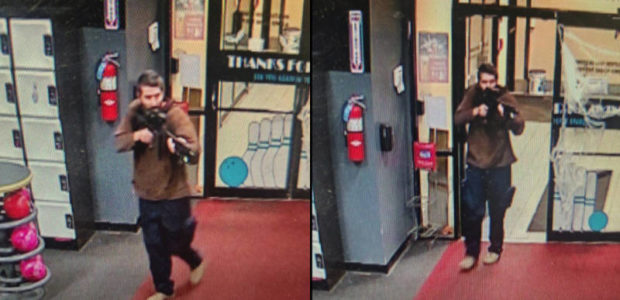


It turns out that a Sagadahoc County Sheriff deputy was hesitant about confronting the Army reservist in Maine who killed 18 people back in late October of this year.
Sagadahoc County Sheriff Sgt. Aaron Skolfield had visited Card’s home for a wellness check and determined Card was there, even though he refused to answer the door. Skofield then called Card’s Army Reserve commander who had earlier detailed the threats Card had made.
He told Capt. Jeremy Reamer that there was no way to approach the home without being in the line of sight of Card through his window curtains. They decided not to proceed with anything more drastic to check on Card directly.
Here’s more from WMTW:
Videos obtained by 8 Investigates are providing new insight into how officials responded to complaints about the deteriorating mental health of the eventual Lewiston mass shooter.
As detailed in a 93-page outside review of the response released by the Sagadahoc County Sheriff’s Office, on Sept. 16, Sgt. Aaron Skolfield visited the Bowdoin home of Robert Card to perform a welfare check.
Skolfield determined Card was inside the home but would not come to the door.
After moving his cruiser away from Card’s driveway, Skolfield called Card’s U.S. Army Reserve commander Capt. Jeremy Reamer.
“He’s there, he’s alive, he won’t answer the door, and there’s no good way to approach the trailer without being in a line of sight through the curtains,” Skolfield is heard saying.
“I’m a cop myself. I don’t want you guys to push into something and escalate it,” Reamer responded.
Hours earlier, Reamer is seen in body camera footage from the Saco Police Department describing to officers threats Card made towards the reserve.
On the call, Skolfield tells Reamer about Maine’s yellow flag law, which allows law enforcement to temporarily seize weapons of individuals determined by a physician and a judge to be a threat to themselves or others.
“There’s the yellow flag laws. So, when there’s someone who’s a danger to themselves or others, there’s a process with — we’re supposed to go through to seize their weapons if they are deemed a danger to themselves or others. So that obviously is a hurdle we have to deal with, but at the same time, we don’t wanna throw a stick of dynamite into a pool of gas either and make things worse,” Skolfield is heard saying.
Ultimately, the yellow flag process was never initiated for Card.
In a second dash camera video captured less than an hour after the first, Skolfield goes to the home of Robert Card’s father looking for his brother Ryan.
“I want to make sure he got Robert’s guns,” Skolfield is heard saying.
Skolfield is heard telling the man, who identified himself as Robert Card Sr., that while attempting a welfare check, Robert wouldn’t speak with him.
“I just wanted to make sure Robert isn’t going to do anything foolish,” Skolfield says before leaving.
The review released by the Sagadahoc County Sheriff’s Office says deputies involved in wellness checks at Card’s home acted reasonably and did not have grounds to take him into protective custody.
This just shows how difficult it can be in dealing with a situation like Card’s. It’s easy to play Monday morning quarterback after the fact of a horrible mass shooting, but given the situation at this time in September and how dangerous it would have been to approach Card’s home, it likely seemed reasonable given what had occurred. Which is likely why they pursued using the family as an option to disarm Card. That approach clearly did not work.
